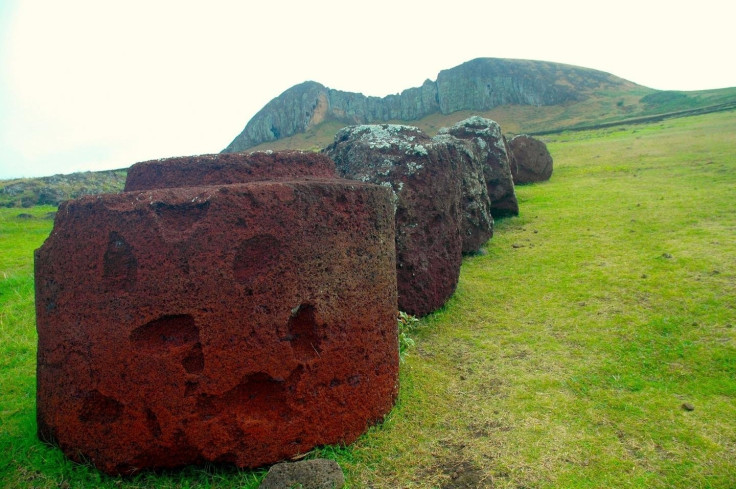Giant stone 'hats' reveal Easter Island was home to a cooperative society, not a warrior culture
The history of the people who once lived on Rapa Nui is shrouded in mystery.

The popularly held view among researchers regarding the mysterious ancient civilisation that once lived on Rapa Nui (Easter Island) is that it was a fierce and competitive warrior culture.
However, a new study based on the analysis of giant stone 'hats' that once adorned the famous moai statues suggests Easter Islanders were, in fact, a supportive and inclusive community who saw cooperation as a way of life.
These stone hats – or pukao – are large cylindrical stones made from a volcanic rock known as 'red scoria', according to Carl Lipo, a professor of anthropology at Binghamton University.
They weigh many tons and were placed on top of the moai when they were erected between 1250 and 1500 . Researchers say the hats reflect ancient Polynesian traditions of honouring the ancestors. Until now, the significance of the more than 70 hats scattered around the island – most of which are no longer sitting atop the moai – has been unclear.
For the study, published in the journal Advances in Archaeological Practice, researchers created 3D computer models of the pukao using photographs in order to study them in more detail, finding that there were many more drawings carved into the rock than previously thought.
"With the building mitigating any sense of conflict, the moai construction and pukao placement were key parts to the success of the island," said Lipo. "In our analysis of the archaeological records, we see evidence that demonstrates the prehistoric communities repeatedly worked together to build monuments. The action of cooperation had a benefit to the community by enabling sharing of information and resources."
Lipo believes that the new findings from the pukao suggests the island still holds many secrets.
"Every time we look at the archaeological record of the island, we are surprised by what we find. There is much more to be learned from this remarkable place – important answers that shed light on the abilities of our ancestors, as well as potential ideas for contemporary society about what it takes to survive on a tiny and remote island," said Lipo.





















